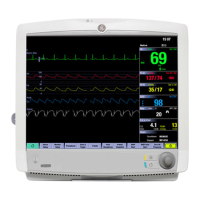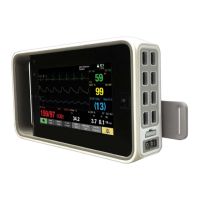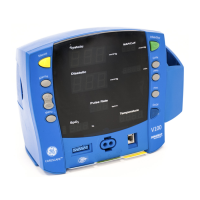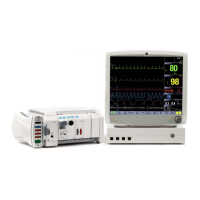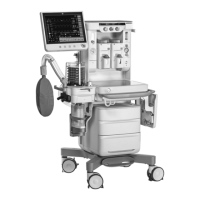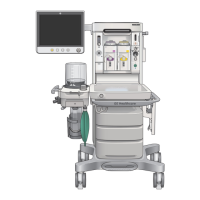Revision C CASE 8-7
2060290-201
Conducting Spirometry Tests
Conducting Spirometry Tests
Overview
We will explain a spirometry test with the SpiroSoft respiration flow
sensor. The operating steps for spirometry tests with the LF 501 sensor
follow next.
The flow-volume loop is recorded in the spirometry test; all diagnostically
relevant values for forced inspiration and expiration can be derived from
the flow-volume loop (see section “Definition of Spirometry Test Values”
on page B-19). You can choose between two measurement modes:
Envelope
ATS
The Envelope mode permits multiple maneuvers to be performed in a
test. When you terminate the test, the system will determine the
envelope waveform and derive the measuring values. If several tests
exist, the system will determine the best measurement, which is the
measurement with the largest sum of FVC + FEV1.
With the ATS mode (American Thoracic Society), the program will first
determine the best expiratory and inspiratory curves of a test, based on
the largest sum of FVC + FEV1 or FIVC + FIV1. Then the system will
determine the test acceptability, using the ATS criteria (see
“Acceptability Criteria” on page 8-10). The best three tests are sorted
according to the largest sum of FVC + FEV1 and stored (see ATS
Summary table). In the next step, the program will determine whether
the best two tests meet the ATS reproducibility criteria (see
“Reproducibility Criteria” on page 8-10). The displayed overall
measurement reflects the flow-volume loop of the best test. The FVC and
FEV1 values are the best values from all tests; similar to the flow-volume
loop, the other values are taken from the best test.
The system offers a number of equations for calculation of the reference
values (see section “Spirometry Reference Value Equations,
Interpretation Modes, Measurements” on page B-13); you can also choose
between two interpretation modes (see section “Interpretation Modes” on
page B-16).

